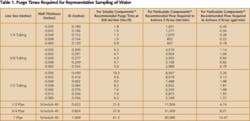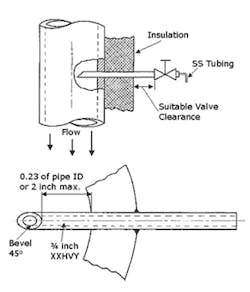New Guidance On Boiler Feedwater Sampling and Monitoring Released by ASME
A new document, “Consensus on Operating Practices for the Sampling and Monitoring of Feedwater and Boiler Water Chemistry in Modern Industrial Boilers” is now available from ASME - the American Society of Mechanical Engineers. It was prepared by the Water Technology Subcommittee of the ASME Research and Technology Committee on Water and Steam in Thermal Systems and provides recommendations for sampling and monitoring required to maintain the suggested water chemistry limits outlined in:
1) “Consensus on Operating Practices for the Control of Feedwater and Boiler Water Chemistry in Modern Industrial Boilers,” and
2) “Consensus on Operating Practices for Control of Water and Steam Chemistry in Combined Cycle and Cogeneration Power Plants.”
The boilers covered by these recommendations include:
NOTES for Table 1 at top of page:
1. Standard, accepted good sampling practices require a minimum of 3 sample system volumes be purged before a sample is considered “representative” of the system. For example, ten feet of 1⁄4” tubing with a wall thickness of 0.035” would require 18 seconds to flush while 100’ of the same tubing would require 3 minutes to flush.2. High-purity water samples typically require longer continuous flushing (24 hours recommended) to achieve very low concentrations of particulate contaminants present. Flow rate shouldn’t be readjusted within 45 minutes of sampling.Get your copy of the new guidelines at http://catalog.asme.org


